Recently vivo launched the US captain Xplay5 flagship mobile phone, Xplay5 uses a hyperbolic screen + integrated metal fuselage design, is the first domestic double curved screen mobile phone, the ultimate version is the vivo new HiFi 3.0 system, Using two ES9028Q2M independent DACs, and with three OPA1612 independent op amps, there is no doubt that Xplay5 Ultimate will be the strongest sound quality in active mobile phones. Let's take a look at the mysteries of vivo's super sound quality.
PS: vivo Captain America Xplay5 Ultimate internal structure is more complex, dismantling the need for professional tools, and difficult to restore after dismantling, please do not try ordinary users.
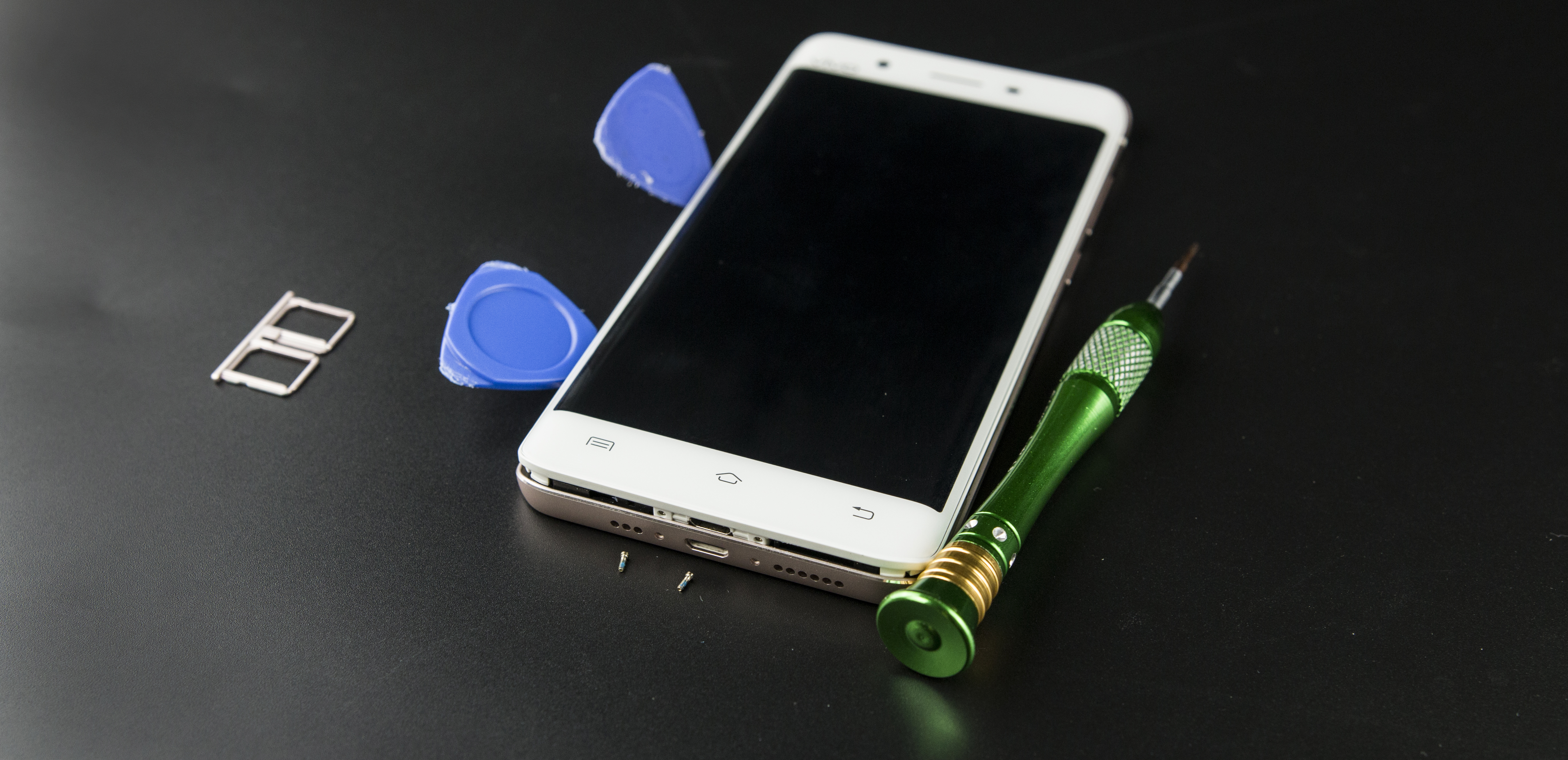
Unplug the SIM slot before beginning disassembly. The design of Xplay5 Ultimate can be described in the same vein, by first removing the plum screw next to the bottom USB interface. The Xplay5 Ultimate uses a hyperbolic glass + all-metal body design, so we began dismantling from the screen, using the paddle to slowly separate along the gap between the screen and the fuselage.
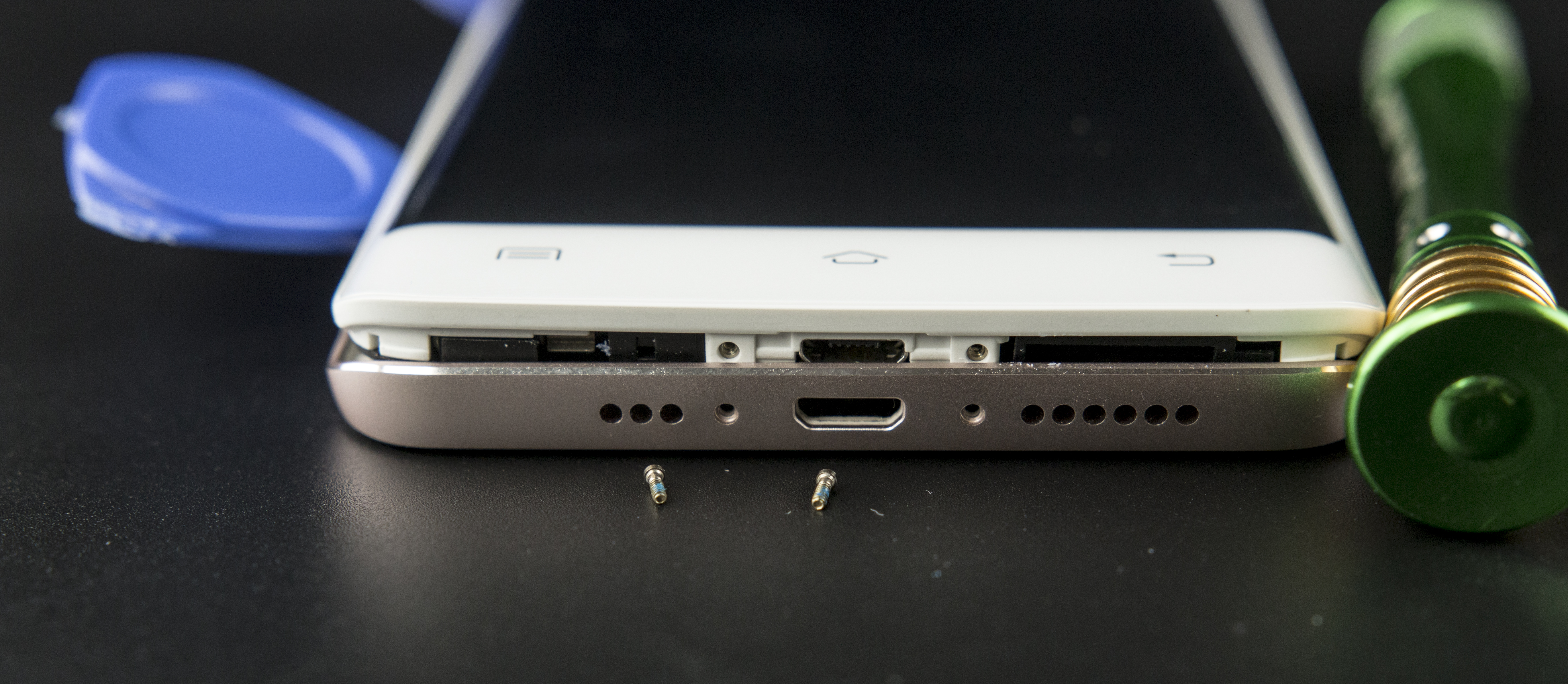
The hyperboloid glass is affixed to the white gasket first, and then the buckle and the metal back cover are fixed. The disassembly must be handled with care to prevent the snap-breakage.
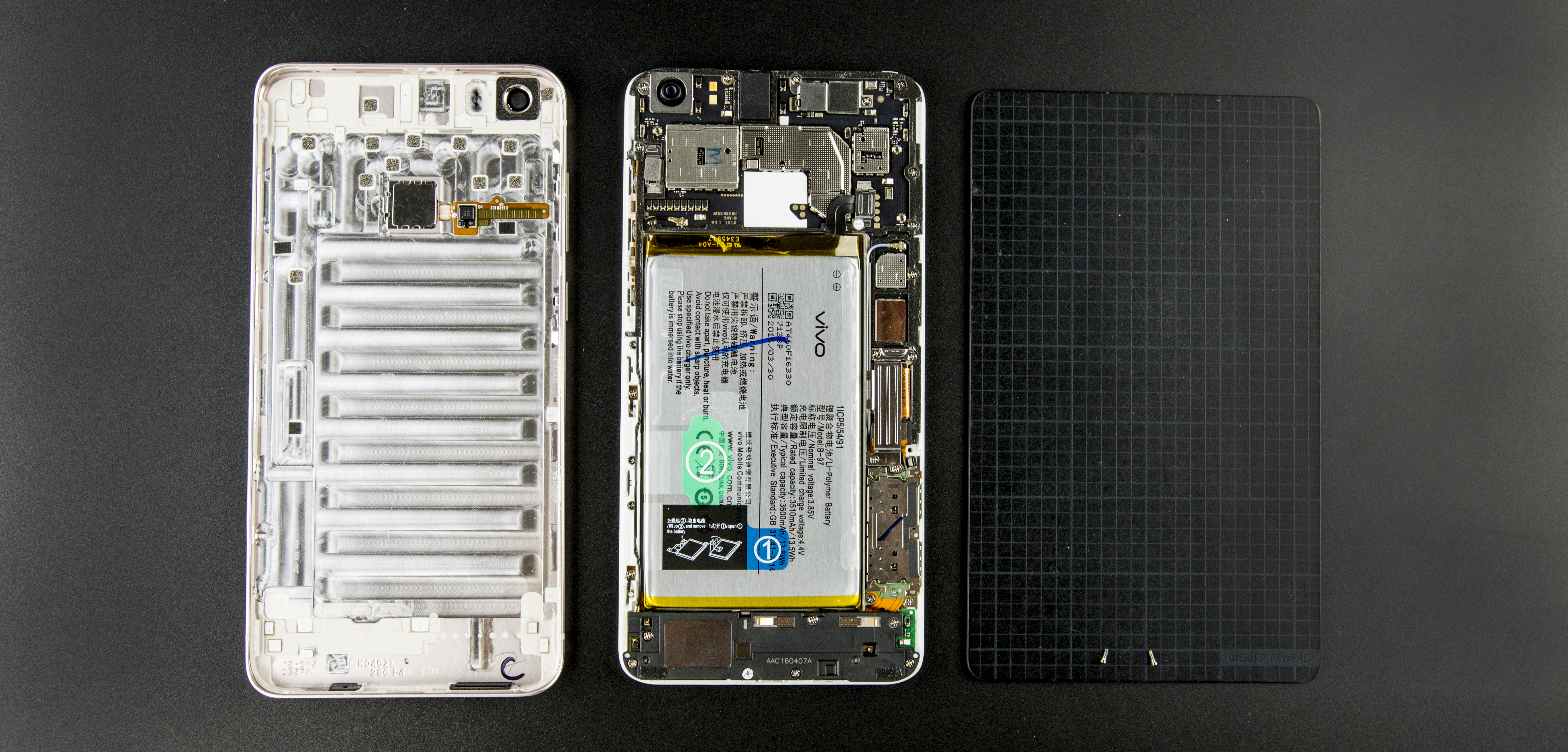
The internal structure of the motherboard, battery, etc. can be seen after the rear cover is disassembled. The back cover is a vivo all-metal one-piece rear cover. There is no injection molded NFC antenna inside the back cover, and the Xplay5 Ultimate may not have the same NFC function.

The fingerprint identification module is integrated on the back cover and is connected to the main board through contacts. This design also facilitates the dismantling of the back cover.
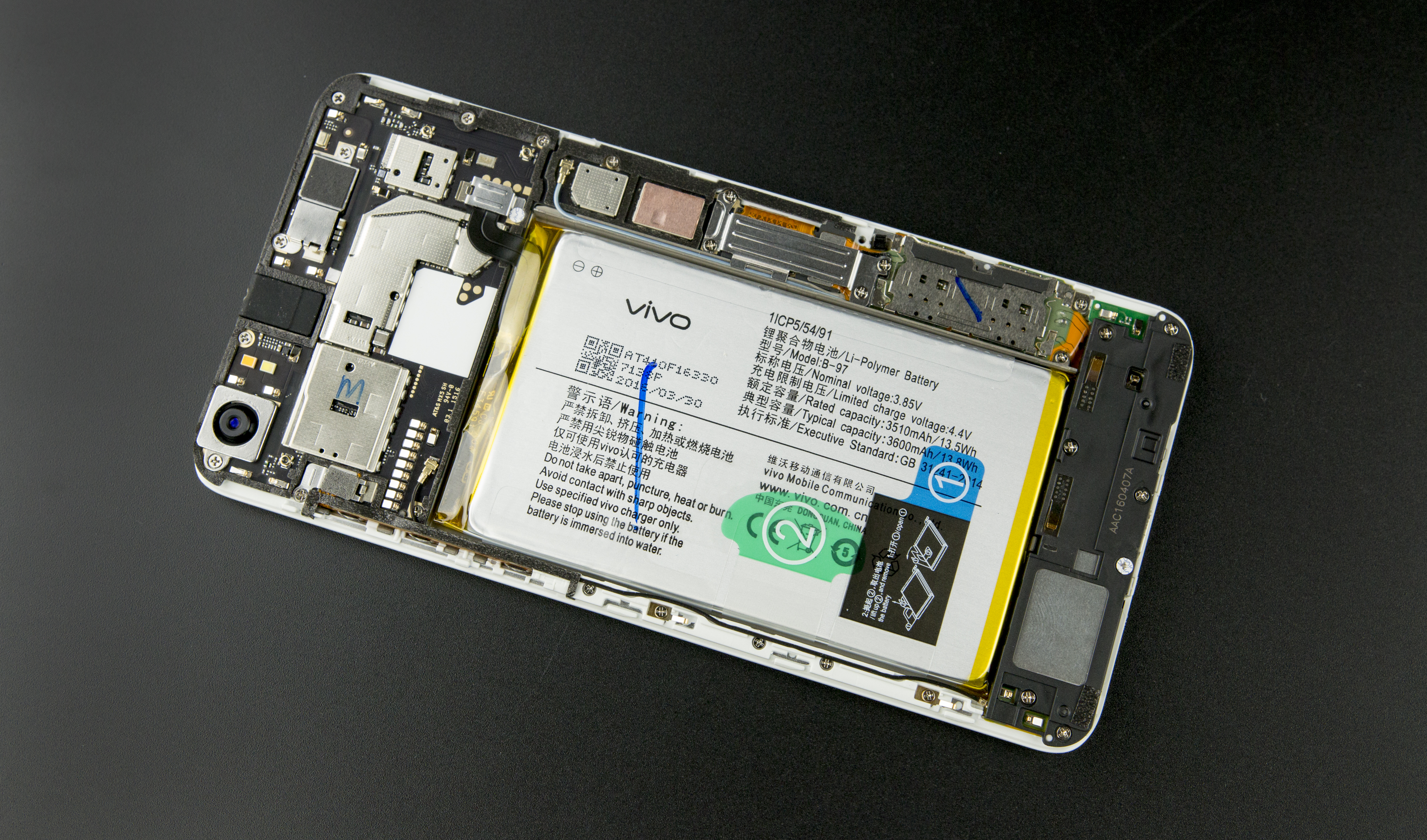
The internal circuit design is a comparison of the standard motherboard + battery + secondary design.

Disconnect the battery cable from the phone first. Vivo's all cable is used for metal baffle + screw fixation, can prevent the cable from loosening due to shaking.
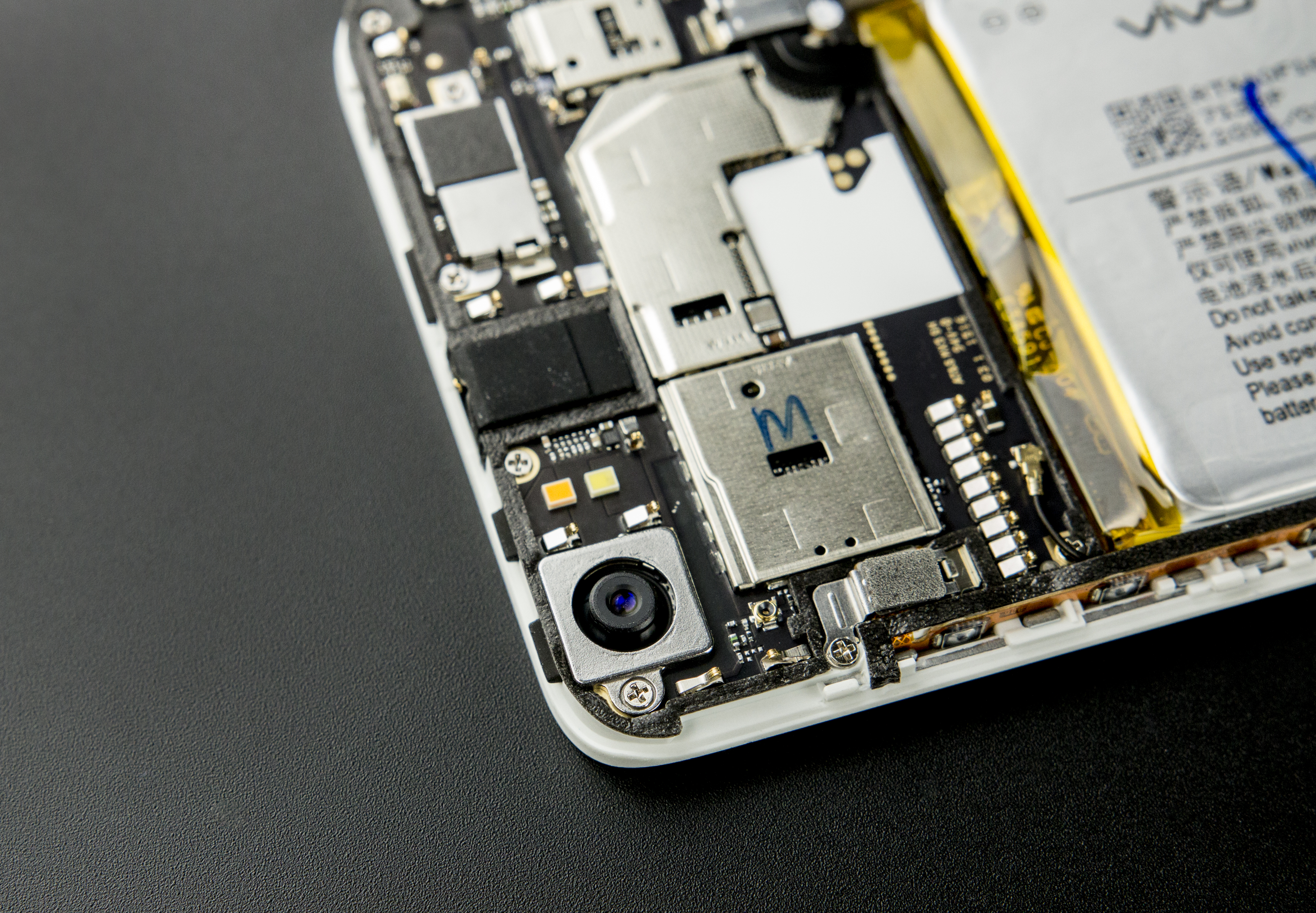
Vivo uses a metal baffle to fix all the wires in the cable.

In order to facilitate the separation of the main board, the sub-board of the speaker is first removed, and further dismantling is performed.

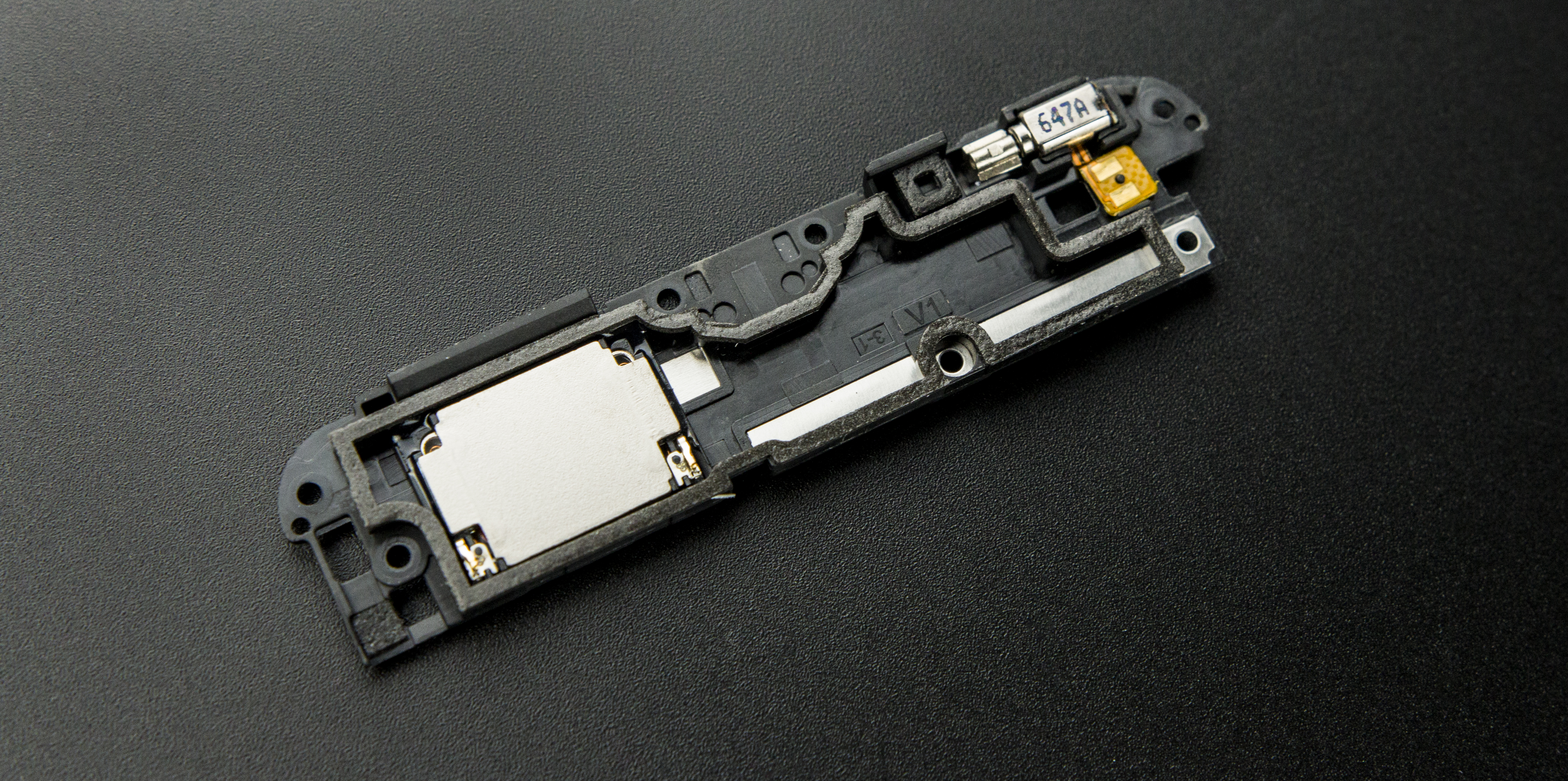
The speaker, USB interface, and vibration motor are inside the sub board.
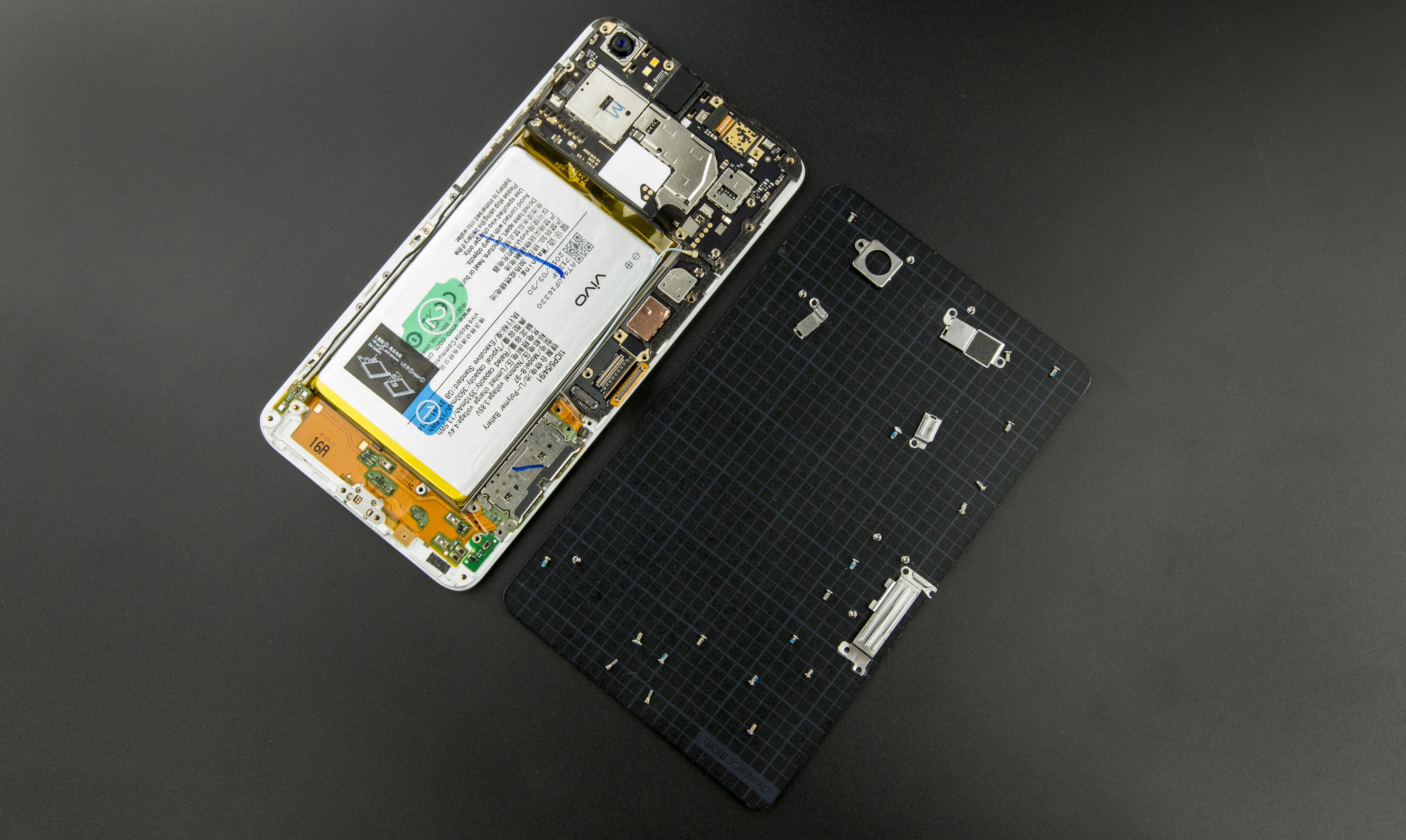
After removing all baffles and screws one by one, separate the various cables and coaxial cables including the screen cable.
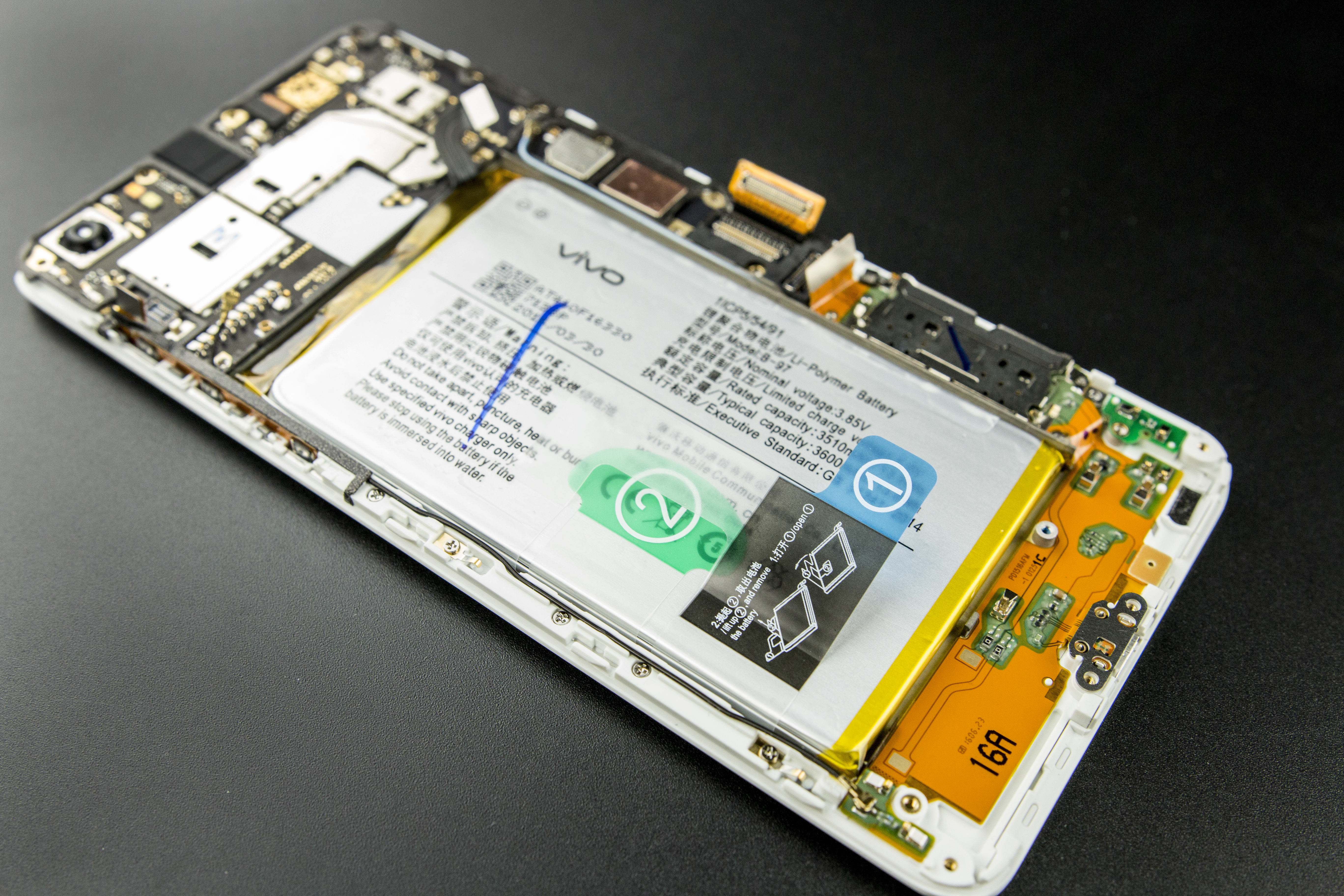
The battery is affixed to the middle frame with double-sided tape, but Vivo has designed an easy-to-remove handle for it. Pull the label 1 first, then pull the label 2 to remove the battery easily.
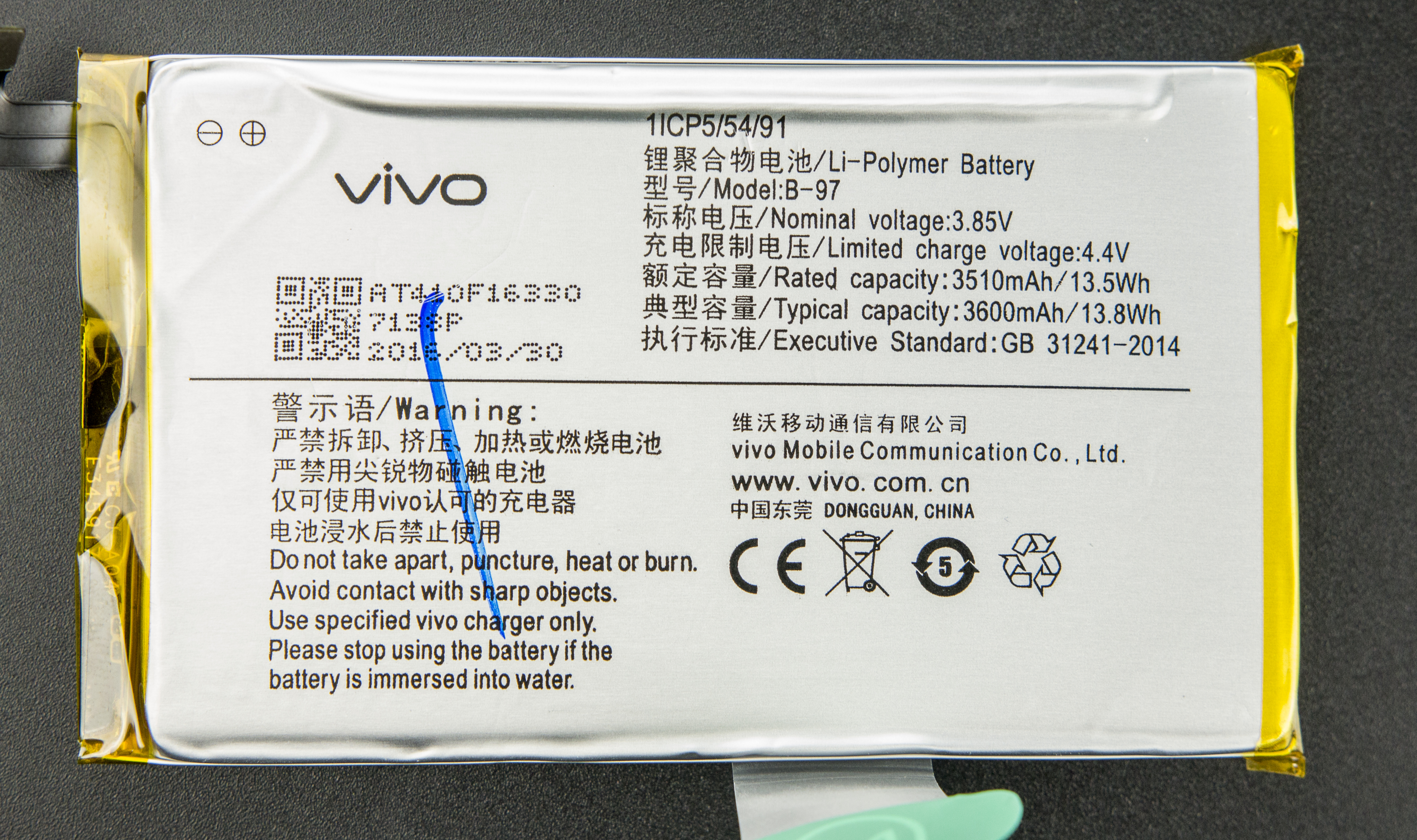
The battery uses the same lithium ion polymer battery as the standard version and has a capacity of 3600 mAh.
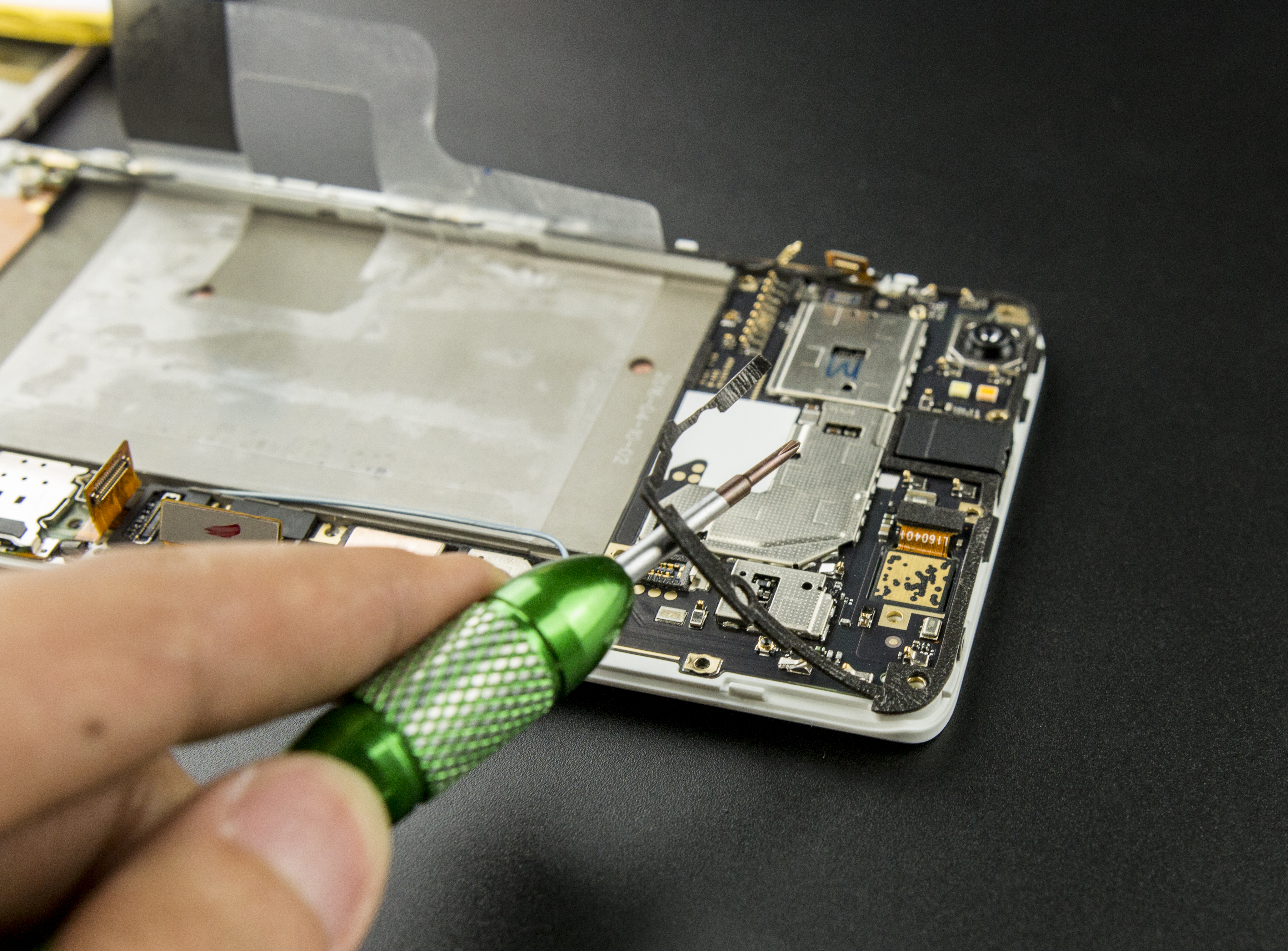
Then you can remove the motherboard, in addition to a large number of screws, the motherboard edge also uses a circle of black adhesive.
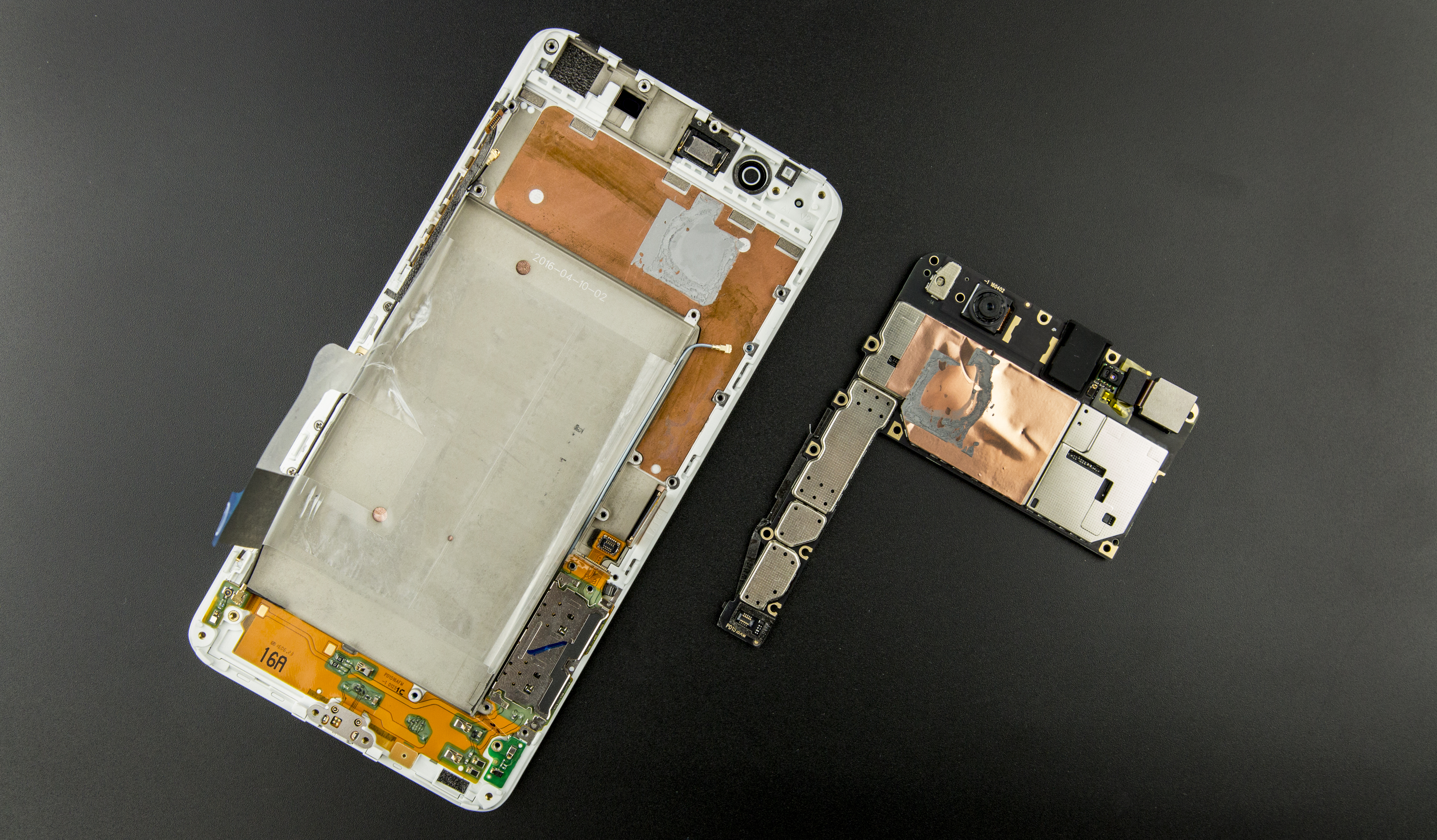
Remove the motherboard, cover the metal shield on the back of the motherboard with copper foil, and connect it with the middle frame through thermal grease. This design will conduct heat better to the middle frame and help heat dissipation. Compared with the standard version, Xplay5 Ultimate Edition also added a large area of ​​the heat sink copper sheet, the material is quite conscience, in order to improve heat dissipation can be described as sparing no effort.

The motherboard is covered with a metal shield and there are basically no exposed chips.

The back of the motherboard is also covered with a metal shield. The copper foil on the shield can enhance the heat dissipation of each chip.
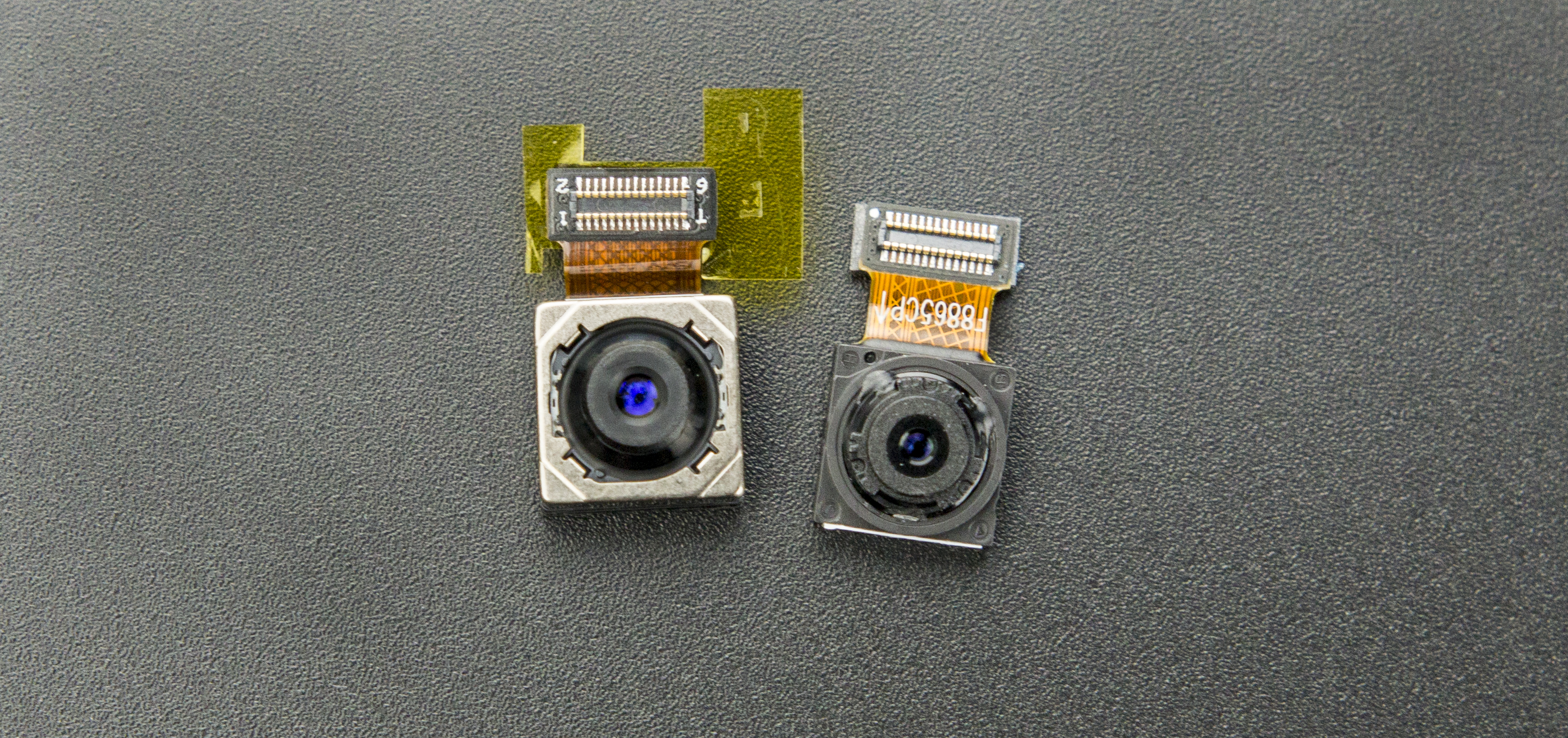
After removing the motherboard, we can remove the camera. The Xplay 5's rear camera is 16 million pixels, uses the Sony IMX298 sensor, lens aperture f2.0, and no optical image stabilization. Preposition is 8 million, so the two are closer in size.

After tearing the copper foil on the back of the motherboard, we can see the large metal shield underneath. The SoC+ part of the flash memory chip still uses thermal grease and heat sink copper foil. Metal shields can reduce the mutual interference between the chips, which will help the signal of the mobile phone and the HiFi system's sound quality.

The shield on the front of the Xplay5 Ultimate motherboard is all soldered to the motherboard. We use a hot air gun to slowly remove it.

On the other hand, there are also a large number of shields. After removing the shield, you can see all the specific models of the chip.
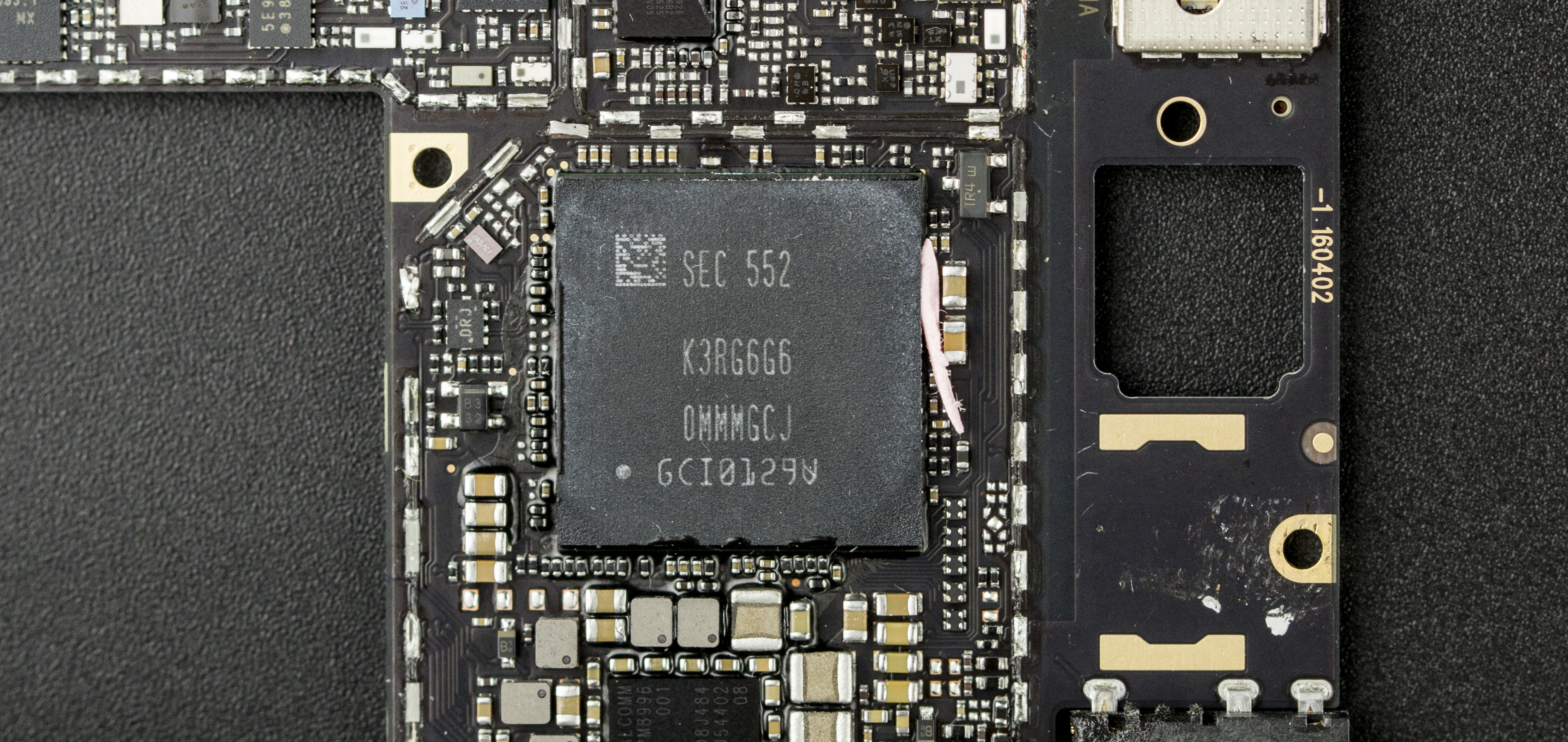
The most prominent Samsung K3RG6G60MM-MGCJ LPDDR4 memory chip on the back of the motherboard has a capacity of 6GB and is packaged with the Qualcomm MSM8996, the Snapdragon 820, manufactured using a 14nm FinFET process and equipped with an Adreno 530 graphics processor.
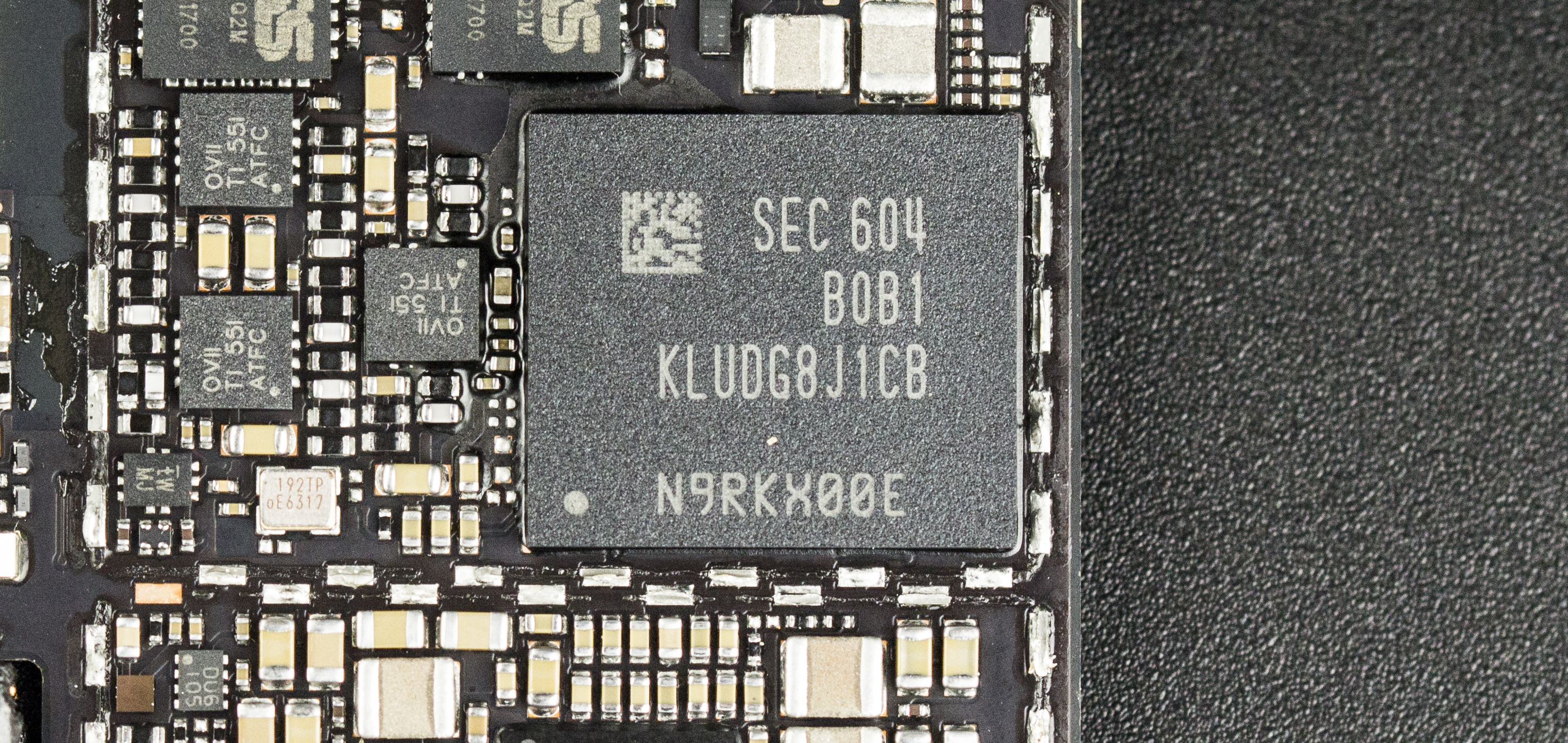
Another large volume is Samsung's KLUDG8J1CB-B0B1 flash memory chip, chip area of ​​11.5 × 13 × 1.2mm, in line with UFS2.0 specification, capacity of 128GB, using MLC G3 1Lane particles.
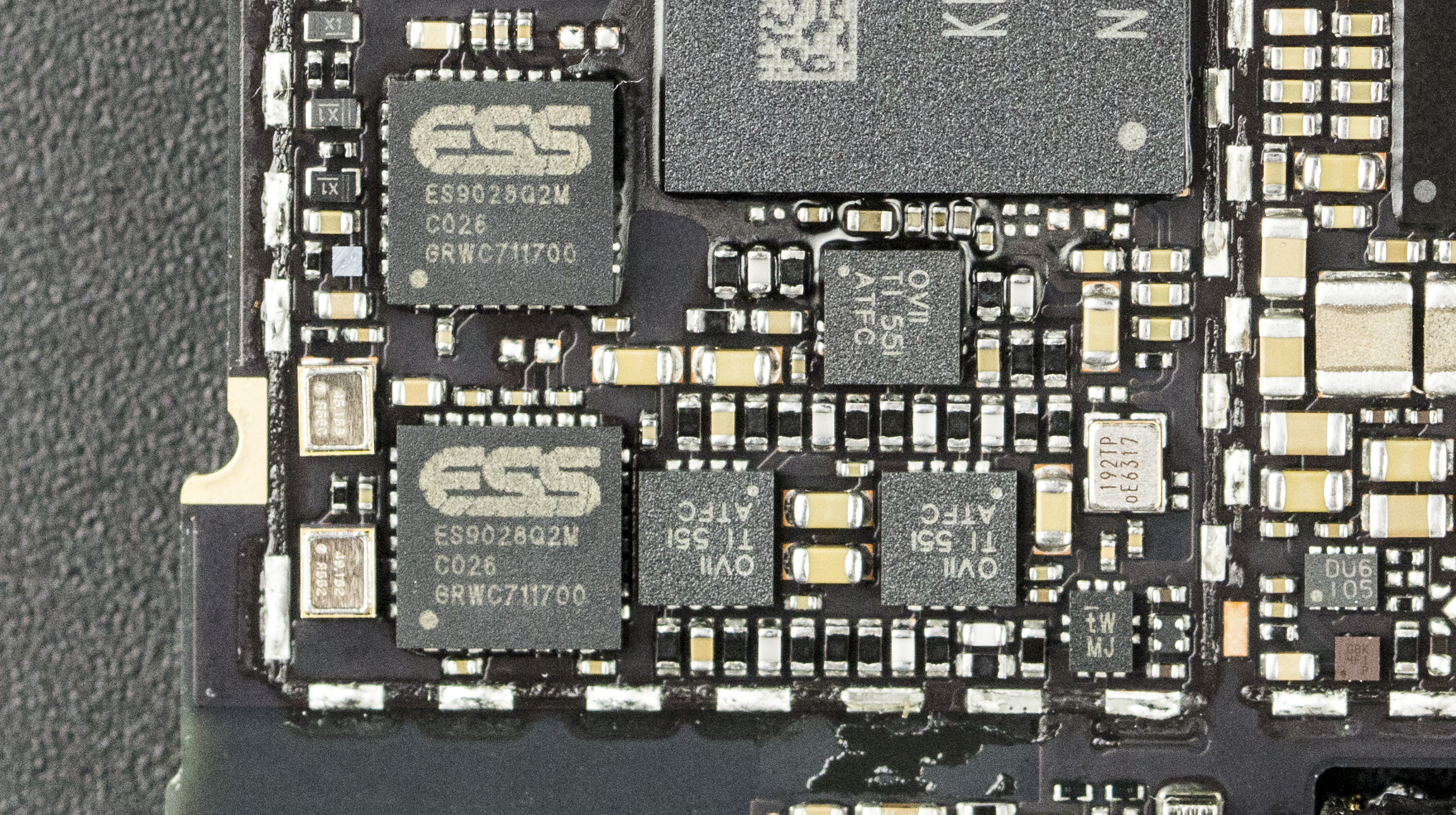
Then finally arrived at the audio chip, the aircraft uses two ES9028Q2M independent DAC, and with up to 3 OPA1612 independent op amp.
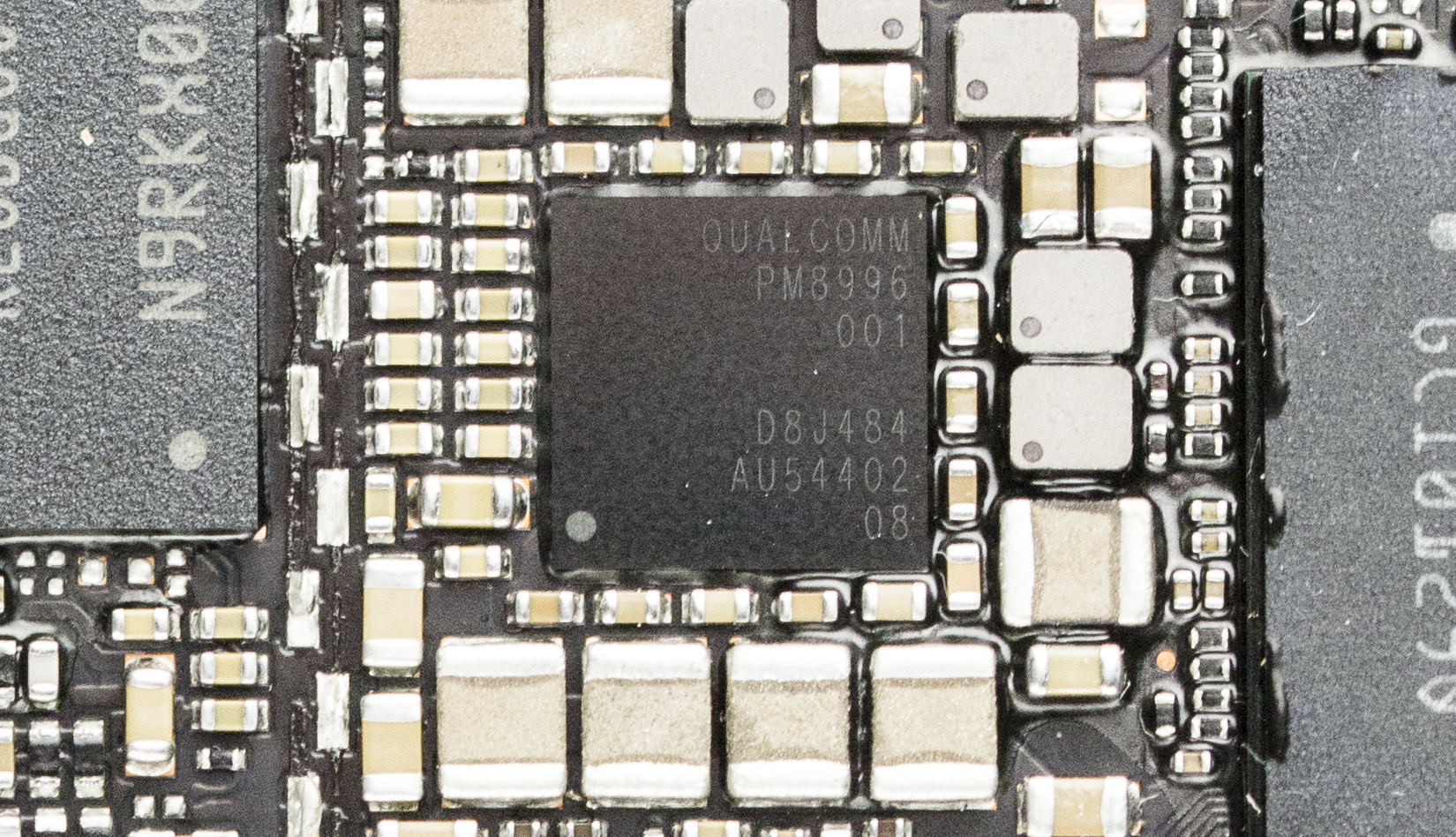
The other large chip on the reverse side is the Qualcomm PM8996 power management IC .
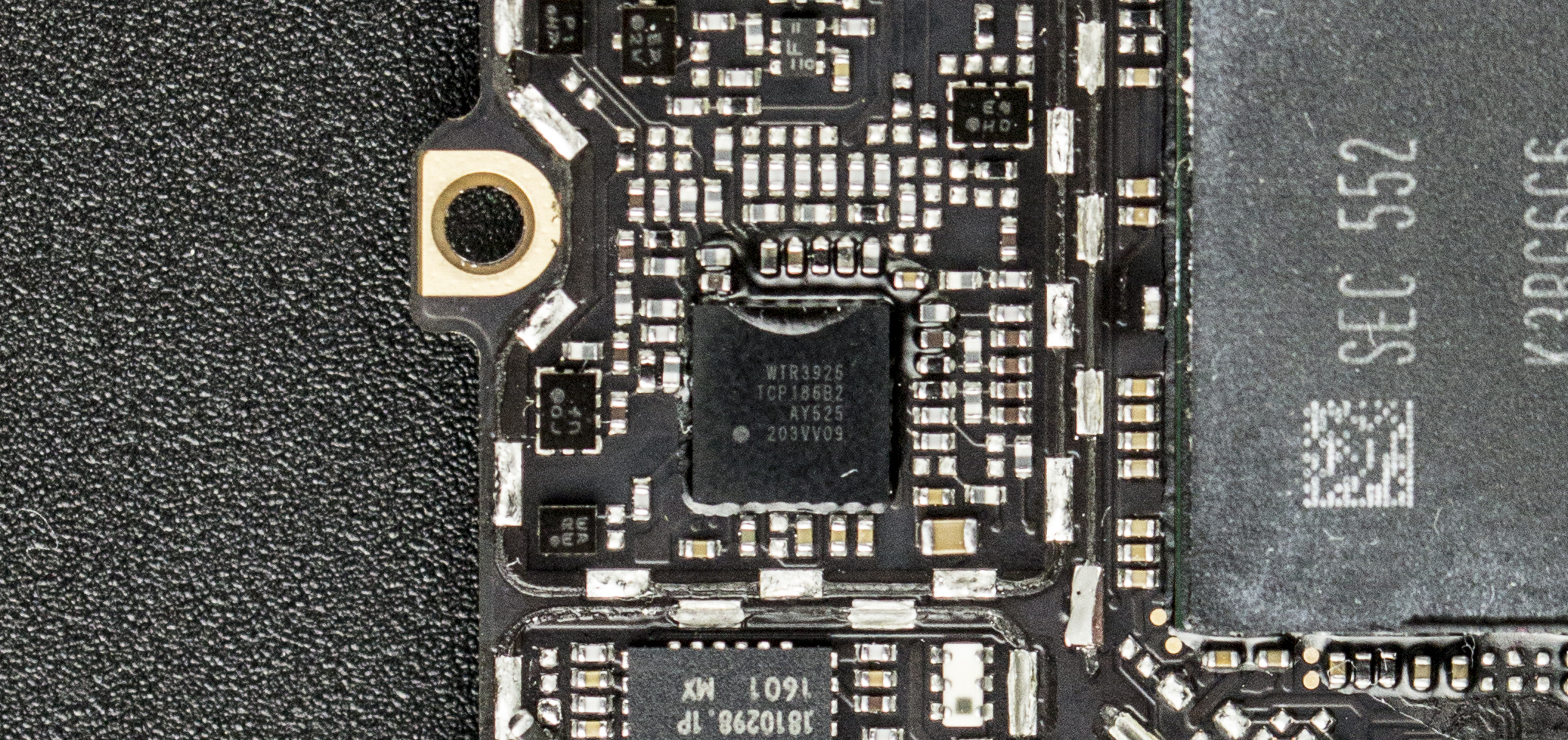
Qualcomm WTR3925 LTE transceiver.

Skyworks 77824-11 LTE Power Amplifier Module "Power Amplifier Module For FDD LTE".
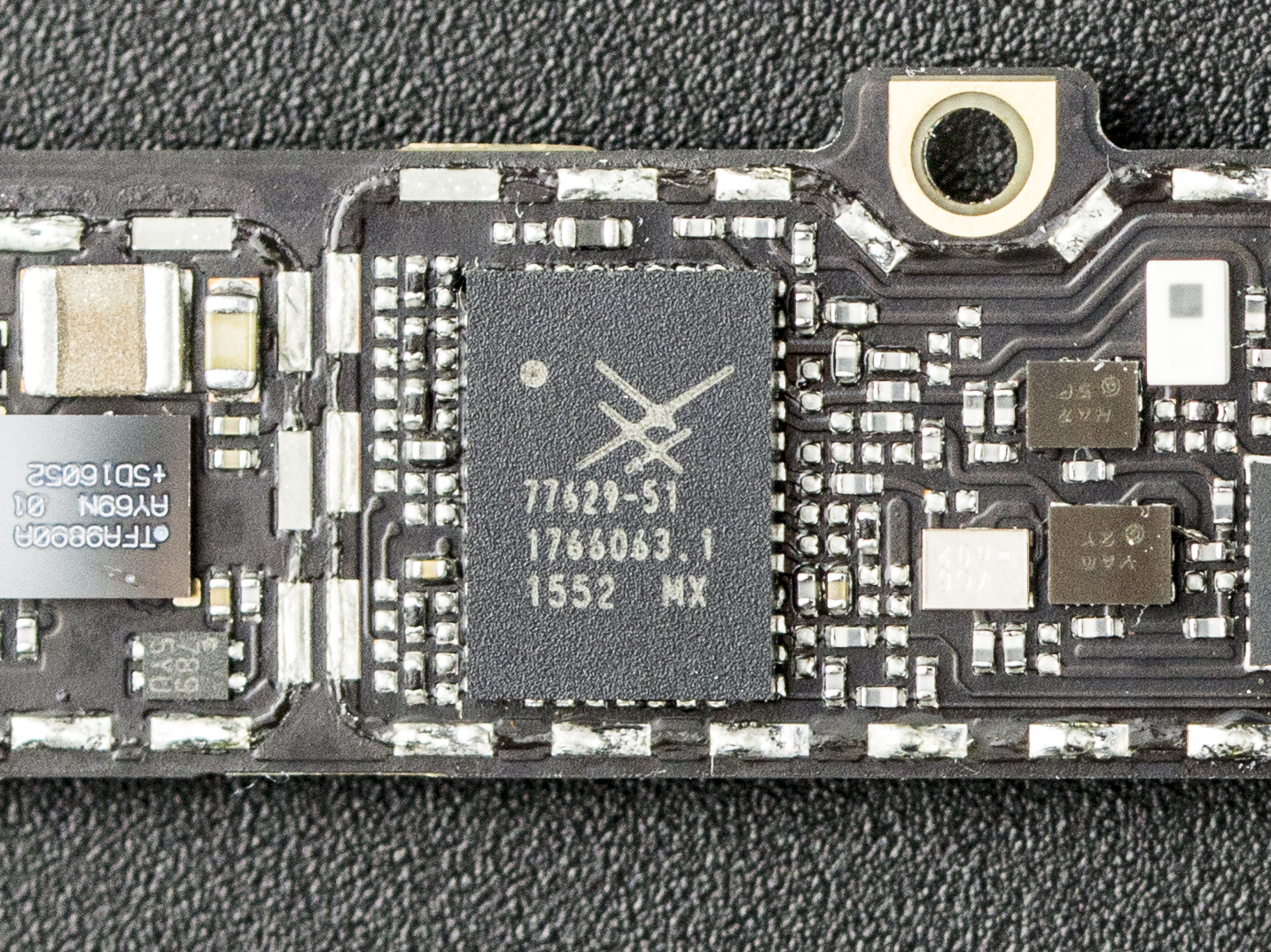
Skyworks 77629 -51 Multimode Mutiband Power Amplifier - Multi-frequency multimode power amplifier.
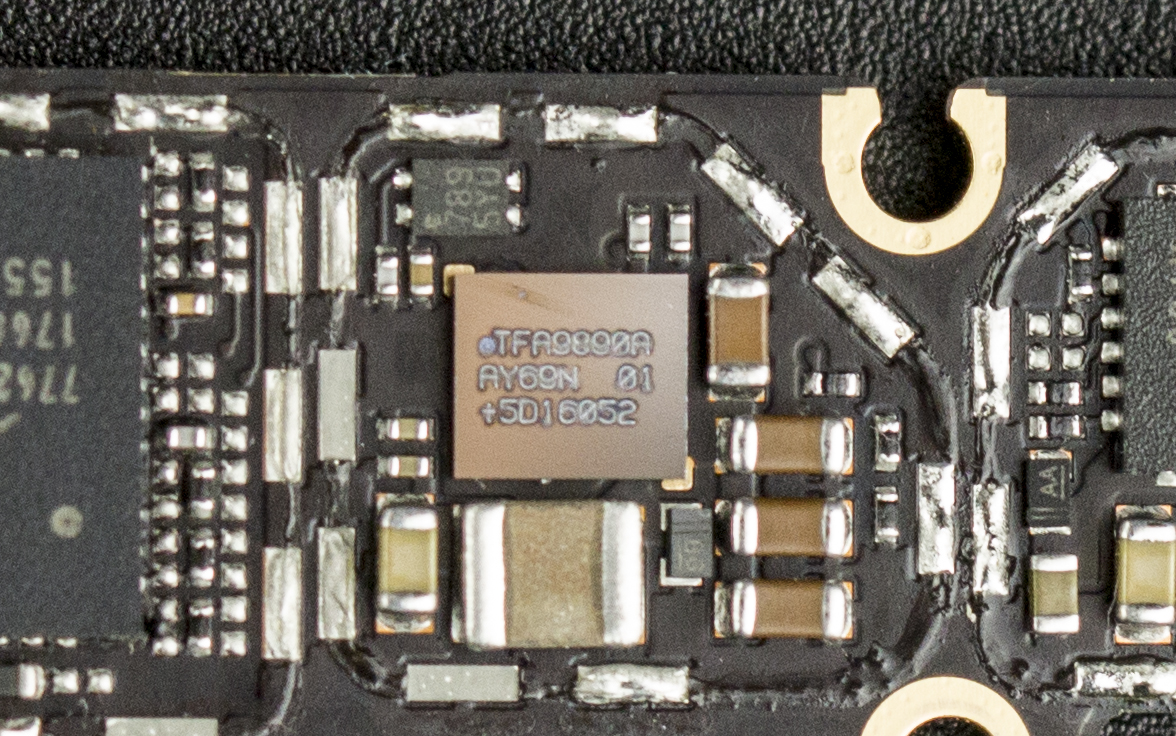
NXP TFA9890A high efficiency class-D audio amplifier with a general speaker boost and protection algorithm.

TI BQ24192 I2C Controlled 4.5A Single Cell USB/Adaptor Charger w/ Narrow VDC Power Path.
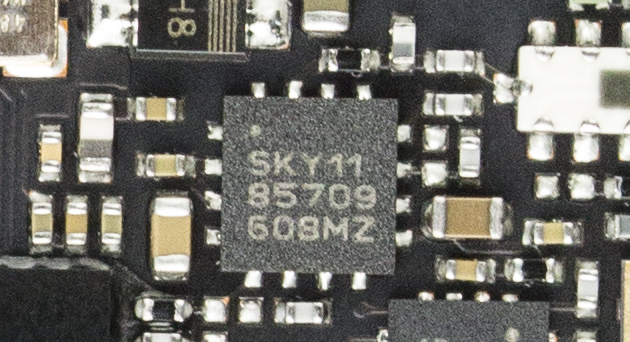
Let's look at the chip on the front of the motherboard. Skyworks 85709-11 5GHz 802.11ac wlan front-end module - 5GHz 802.11ac Wi-Fi module.
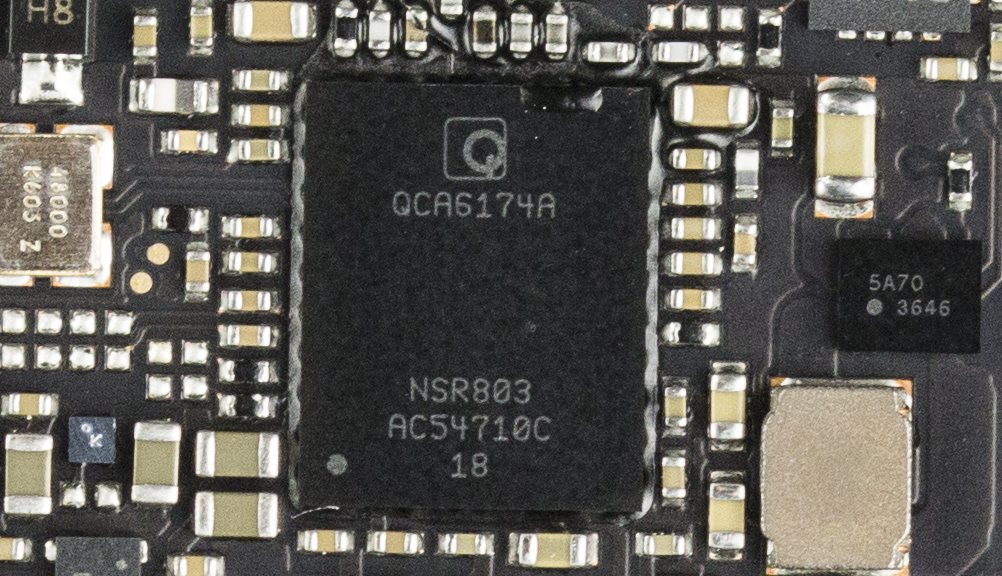
Qualcomm QCA6174A wifi and Bluetooth integrated module.

Qualcomm PMI8996 Power Management IC.
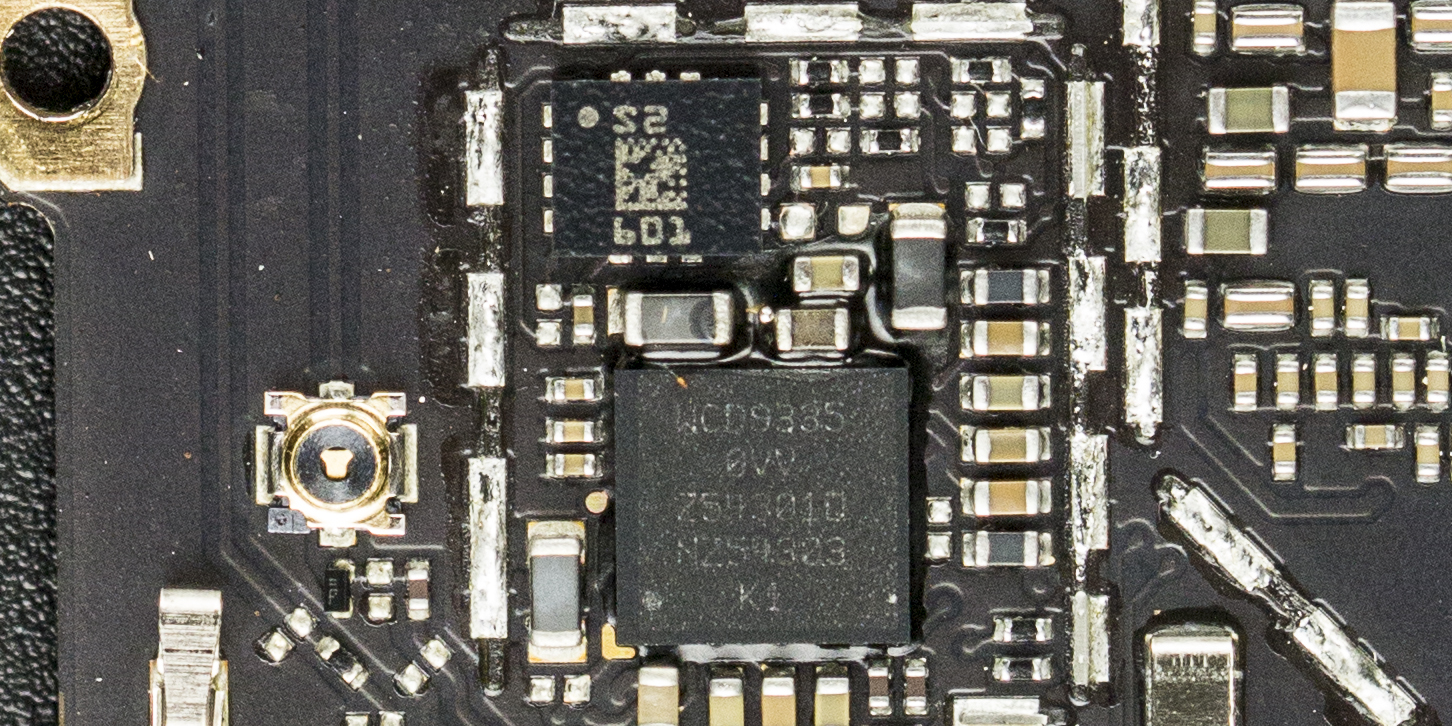
Qualcomm WCD9335 audio decoder chip.

Finally, the Xvideo5 flagship version of vivo capped dismantling the family portrait. At this point, we ended the dismantling of Captain America's vivo Xplay5 flagship. In general, Xplay5's flagship version continued the excellent internal circuit design of vivo, the layout of the motherboard was quite neat, and a shield was installed on most chips. The heat-generating silicon pad + copper foil + thermal grease + heat sink copper plate + metal middle frame is used to enhance heat dissipation in the part of the processor/memory/power management chip with the highest heat output, and the material used is quite conscience.
In addition, the machine has used two ES9028Q2M independent DACs on mobile phones, and with up to three OPA1612 independent amplifiers. The stacking material is quite luxurious. It is unique in the current mobile audio field and it is the most commercially available one. The audio phone is no exception.